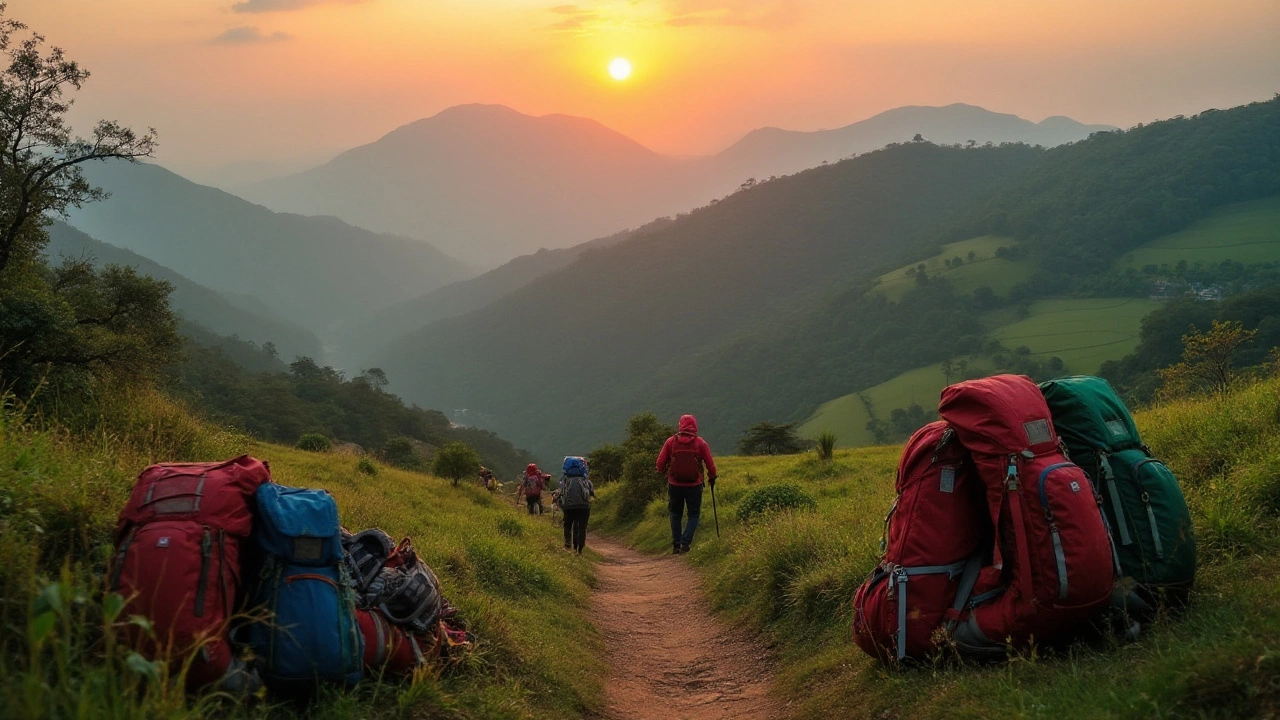SEARCH
India Trails – Your Go‑to Guide for Trekking Across the Subcontinent
If you love walking off the beaten path, India offers trails that blend wild nature, ancient culture, and jaw‑dropping views. From the lofty passes of the Himalayas to the breezy cliffs of the Western Ghats, there’s a route for every pace and budget. This page pulls together the best guides, practical advice, and insider tips so you can hit the trail with confidence.
Top Trail Picks by Region
North – Himalayan Giants: The Markha Valley trek in Ladakh gives you desert‑like landscapes, high‑altitude passes, and nomadic villages. It’s a 7‑day adventure that’s doable with moderate fitness and a good pair of boots. If you want something shorter, the Valley of Flowers walk near Uttarakhand blooms with alpine flowers from July to September and can be completed in 3‑4 days.
East – Untamed Wilderness: The Dzongri Trek in Sikkim offers sweeping views of Kanchenjunga and a chance to meet local Gurung families. It’s a classic 5‑day route that’s still relatively crowd‑free. For a truly remote experience, try the Meghalaya Cherrapunji waterfalls trail, where misty cascades and lush forests feel like another world.
South – Hill‑Country Cool: The Chembra Peak climb in Kerala gives you a heart‑shaped lake and panoramic vistas of the Western Ghats. A day hike works for most, but you can extend it with a night in nearby tea estates. In Karnataka, the Coorg Abbey Falls trek mixes coffee plantations, pepper vines, and a waterfall that’s perfect for a quick splash.
West – Coastal and Desert Paths: The Rann of Kutch salt‑flat walk at sunrise feels otherworldly; bring a flashlight and warm layers for a 2‑day camp under the stars. Maharashtra’s Satpura Range offers jungle trails with wildlife spotting opportunities, ideal for a 4‑day backpacking trip.
Practical Tips for a Smooth Trek
Start with a realistic fitness check. Even moderate trails can become tough at altitude, so a few weeks of cardio and leg work will pay off. Pack light but smart: a good pair of waterproof hiking shoes, layered clothing, a compact sleeping bag, and a refillable water bottle with a purification tablet are must‑haves.
Permits can be a surprise blocker. The Himalayas often need a forest or trekking permit, while protected areas in the Western Ghats require a local entry pass. Check the specific trail page on our site for the latest requirements and download any forms before you leave.
Local transport is easier than you think. Most trailheads are reachable by shared taxis, state buses, or even auto‑rickshaws in smaller towns. Book a seat a day ahead if you’re traveling during peak season (June‑August for the North, December‑February for the South).
Food and water safety matter. Carry enough ready‑to‑eat meals for the first day; after that, rely on local dhabas or village eateries, but always boil or filter water. A small spice kit can brighten bland meals and keep morale high.
Finally, respect the environment. Stick to marked paths, carry out all trash, and follow any cultural guidelines—like removing shoes before entering a shrine. The fewer footprints you leave, the more these trails stay beautiful for the next traveler.
Ready to lace up your boots? Browse the posts below for detailed itineraries, budget breakdowns, and real‑world stories from trekkers who’ve walked these routes. Your next great adventure on India’s trails starts here.

Understanding Trekking Costs in India's Breathtaking Trails
Exploring the diverse landscapes of India through trekking is a rewarding experience that comes with varying costs. Understanding the expenses involved in trekking across different Indian terrains can help adventurers plan better. This article breaks down factors affecting trekking costs in India, from essential gear to travel and accommodation, offering a comprehensive guide for both budget and luxury trekking enthusiasts. With insights into various popular trekking destinations, this piece aims to equip readers with the knowledge they need for a memorable trekking journey.
Continue reading